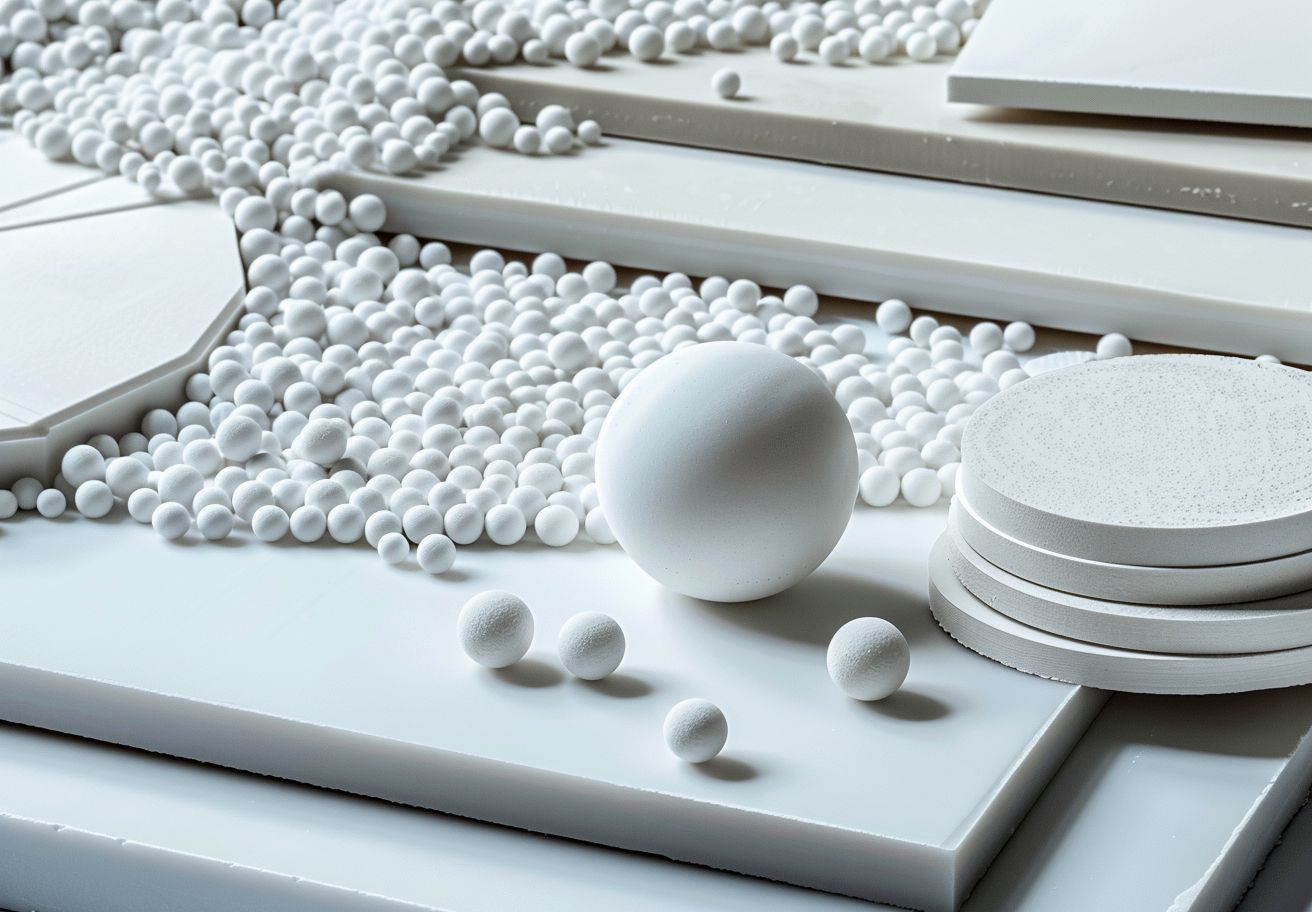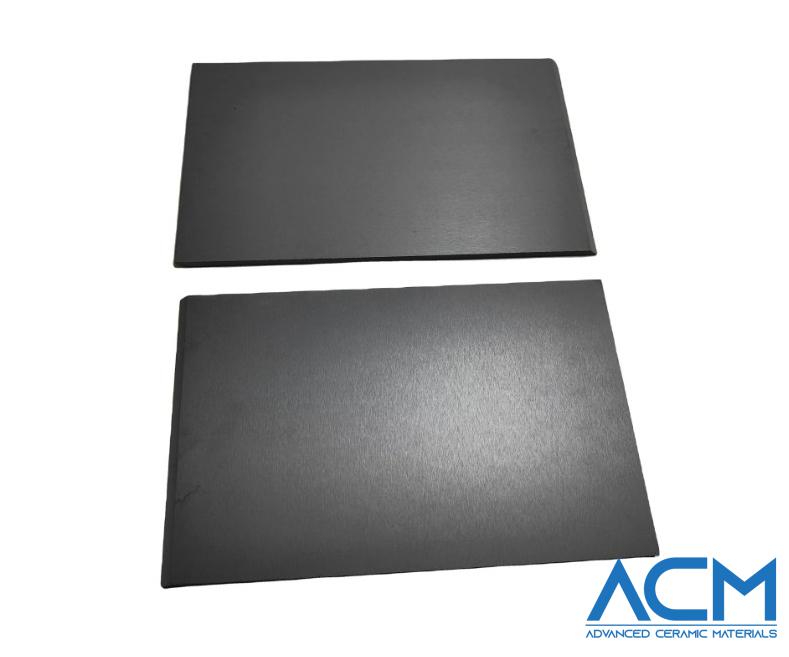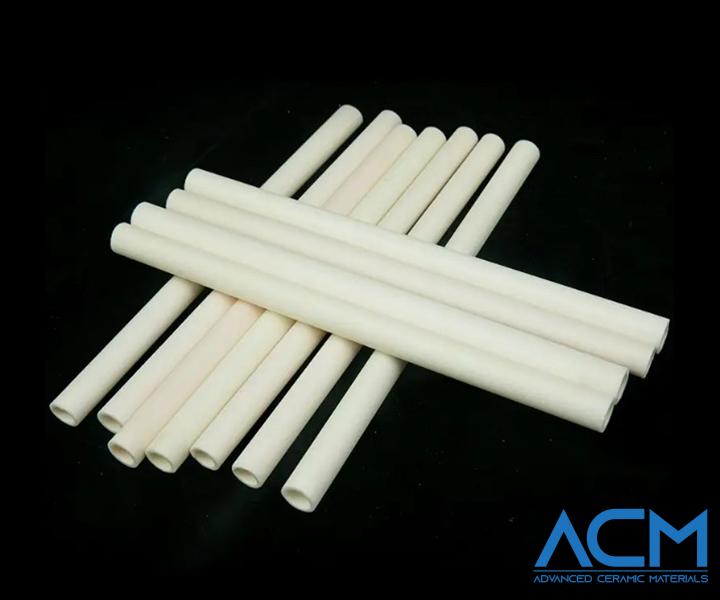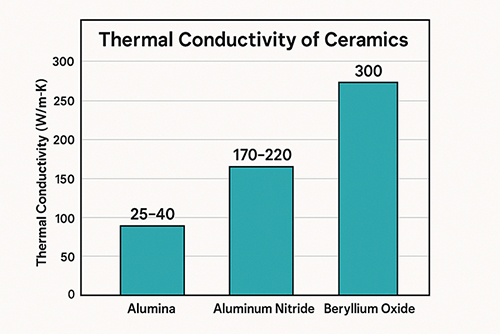Essential Ceramic Material Properties: Hardness, Heat Resistance, Corrosion Resistance, and Electrical Insulation
Introduction
Ceramic materials are pivotal in various industries due to their unique properties, including hardness, heat resistance, corrosion resistance, and electrical insulation. These characteristics make ceramics indispensable in fields such as electronics, aerospace, medical devices, and more. This article will explain these essential properties, exploring their significance, applications, and examples.

Hardness
Hardness, defined as a material's ability to resist localized plastic deformation, is a critical property of ceramic materials. High hardness makes ceramics ideal for use in cutting tools, abrasives, and wear-resistant applications. They maintain their shape and effectiveness even under extreme conditions, which is why they are extensively used in industries requiring high durability and performance.
For instance, in the realm of cutting tools, materials such as silicon carbide (SiC) and boron carbide (B4C) are utilized for machining metals and composites due to their exceptional hardness. In abrasive applications, aluminum oxide (Al2O3) and diamond are common choices for grinding and polishing. Additionally, wear-resistant components like engine parts, bearings, and seals benefit from the high hardness of ceramics, significantly extending their operational lifespan. Aluminum oxide (Al2O3) and silicon carbide (SiC) are prime examples of ceramics known for their hardness and thermal stability, making them invaluable in industrial applications.
Here are some of the hardest ceramic materials along with their hardness values:
| Ceramic Material | Hardness (HV) |
|---|---|
| Diamond | 10,000+ |
| Cubic Boron Nitride (cBN) | 4,500 |
| Silicon Carbide (SiC) | 2,500-3,000 |
| Boron Carbide (B4C) | 2,800-3,400 |
| Aluminum Oxide (Al2O3) | 1,500-2,000 |
| Titanium Diboride (TiB2) | 2,400 |
| Tungsten Carbide (WC) | 2,000 |
| Zirconia (ZrO2) | 1,200-1,500 |
| Silicon Nitride (Si3N4) | 1,500 |
| Chromium Oxide (Cr2O3) | 1,500 |
Heat Resistance
Heat resistance is another essential property of ceramics, defined as the ability to maintain their properties and structural integrity at high temperatures. This characteristic is crucial in environments experiencing extreme temperatures, such as aerospace, manufacturing, and energy production. Ceramics with high heat resistance are indispensable in these fields.
In aerospace, heat-resistant ceramics are used in engine components, thermal barrier coatings, and space shuttle tiles, where they withstand high temperatures and protect vital parts. Industrial furnaces and kilns often employ refractory ceramics like zirconia (ZrO2) and mullite (3Al2O3·2SiO2), which can withstand extreme heat without degrading. In power generation, turbine blades and heat exchangers made from heat-resistant ceramics improve efficiency and longevity. Zirconia (ZrO2), known for its thermal stability and resistance to thermal shock, and mullite (3Al2O3·2SiO2), noted for its high-temperature stability, are commonly used in such high-temperature applications.
Here are some of the most heat-resistant ceramic materials along with their maximum operating temperatures:
| Ceramic Material | Heat Resistance (°C) |
|---|---|
| Tungsten Carbide (WC) | 2,870 |
| Tantalum Carbide (TaC) | 3,880 |
| Hafnium Carbide (HfC) | 3,900 |
| Zirconia (ZrO2) | 2,700 |
| Silicon Carbide (SiC) | 2,700 |
| Aluminum Oxide (Al2O3) | 2,050 |
| Magnesium Oxide (MgO) | 2,800 |
| Mullite (3Al2O3·2SiO2) | 1,850 |
| Boron Carbide (B4C) | 2,350 |
| Silicon Nitride (Si3N4) | 1,900 |
Corrosion Resistance
Corrosion resistance, the ability of a material to withstand chemical or electrochemical reaction with its environment without significant degradation, is a critical property for ceramics used in harsh chemical environments. This property ensures longevity and reliability, reducing maintenance costs and improving safety.
In chemical processing, ceramics are employed in reactors, pipes, and pumps where corrosive chemicals are handled, providing a durable and long-lasting solution. In the medical field, implants and prosthetics made from corrosion-resistant ceramics are biocompatible and durable, ensuring patient safety and extended device life. Marine engineering also benefits from corrosion-resistant ceramics, which resist saltwater corrosion, thus extending the life of marine structures and equipment. Silicon nitride (Si3N4), used in bearings and engine components, and titanium diboride (TiB2), used in metal smelting and chemical processing equipment, are excellent examples of ceramics that exhibit outstanding corrosion resistance.
Electrical Insulation
Electrical insulation is the ability of a material to prevent the flow of electric current, making it an excellent insulator. This property is essential in electronic and electrical applications, ensuring the safe and efficient operation of devices and systems.
In electronics, ceramics are used in insulating substrates, dielectrics in capacitors, and protective coatings for semiconductors. Power systems rely on high-voltage insulators, bushings, and transformers made from ceramics to prevent electrical failures. Medical equipment also benefits from ceramic insulation, ensuring patient safety and device reliability. Aluminum nitride (AlN), known for its high thermal conductivity and electrical insulation properties, is used in microelectronics and LED applications, while beryllium oxide (BeO), with its excellent thermal conductivity and electrical insulating properties, is employed in high-performance electronic components.
Here are some ceramic materials with excellent electrical insulation properties:
| Ceramic Material | Electrical Insulation (Ω·cm) |
|---|---|
| Aluminum Nitride (AlN) | 10^14 |
| Beryllium Oxide (BeO) | 10^10 - 10^12 |
| Magnesium Oxide (MgO) | 10^12 |
| Silicon Nitride (Si3N4) | 10^15 |
| Aluminum Oxide (Al2O3) | 10^14 |
| Zirconia (ZrO2) | 10^10 - 10^12 |
| Silicon Carbide (SiC) | 10^6 (at room temperature) |
| Boron Nitride (BN) | 10^14 |
| Titanium Dioxide (TiO2) | 10^10 - 10^12 |
| Chromium Oxide (Cr2O3) | 10^10 |
Conclusion
Ceramic materials, with their exceptional hardness, heat resistance, corrosion resistance, and electrical insulation properties, play a crucial role in modern technology and industry. Their unique characteristics make them indispensable in a wide range of applications, from aerospace and electronics to medical devices and industrial processes. Advanced Ceramic Materials (ACM), a company that sells various advanced ceramic products, provides access to these high-performance materials. As research and development continue, the potential applications and performance of ceramic materials are expected to expand further, driving innovation and enhancing the efficiency and durability of various technologies.
References
- Richerson, D. W. (2006). Modern Ceramic Engineering: Properties, Processing, and Use in Design. CRC Press.
- Kingery, W. D., Bowen, H. K., & Uhlmann, D. R. (1976). Introduction to Ceramics. Wiley-Interscience.
- Norton, F. H. (1974). Fine Ceramics: Technology and Applications. McGraw-Hill.
- Coble, R. L., & Burke, J. E. (1975). Ceramic Materials: Science and Engineering. Plenum Press.
- Barsoum, M. W. (2003). Fundamentals of Ceramics. Institute of Physics Publishing.
- Rahaman, M. N. (2007). Ceramic Processing and Sintering. CRC Press.
- Lee, W. E., & Rainforth, W. M. (1994). Ceramic Microstructures: Property Control by Processing. Chapman & Hall.
{{item.content}}
LEVE A REPLY
{{item.children[0].content}}
{{item.content}}
LEAVE A REPLY
SUBSCRIBE OUR NEWSLETTER
- Boron Nitride in Cosmetics: Enhancing Performance and Sensory Appeal
- Maximize MOCVD Yield and Purity with Hexagonal Boron Nitride Setters
- What Are the Advantages and Uses of Boron Nitride Ceramic Sheet?
- The Compression Annealing Advantage for Pyrolytic Boron Nitride
- Beyond Insulation: The Surprising Spectrum of Ceramic Thermal Conductivity













